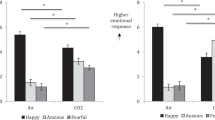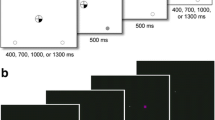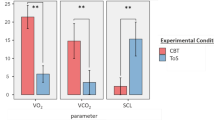Abstract
In this six-period randomised double-blind study, 12 healthy volunteers inhaled mixtures of nitrous oxide at concentrations of 0% (placebo); 3%, 5%, 7%, 10%, and 15% in oxygen. Each concentration was inhaled for 55 min, each period being on a separate day. The order of treatments was randomised using a Latin-Square design. The effects of nitrous oxide were assessed using a battery of performance tests which included measures of attention, psychomotor function, memory and cognition. Mood was assessed using visual analogue scales. Measures of attention and psychomotor performance showed impairment at 15% nitrous oxide, and subjective measures showed sedation at this dose. The Buschke Selective Reminding Task showed impairment to long-term recall at all doses of nitrous oxide compared to placebo, while short-term recall was impaired only at 15%. These results suggest that consolidation of memory may be particularly sensitive to disruption as a result of CNS depression.
Similar content being viewed by others
References
Allison RH, Shirley AW, Smith G (1979) Threshold concentration of nitrous oxide affecting psychomotor performance. Br J Anaesth 51:177–180
Broks P, Preston GC, Traub M, Poppleton P, Ward C, Stahl SM (1988) Modelling dementia: effects of scopolamine on memory and attention. Neuropsychologia 26:685–700
Bruce DL, Bach MJ, Arbit J (1974) Trace anaesthetic effects on perceptual, cognitive and motor skills. Anesthesiology 40:453–458
Buschke H, Fuld PA (1974) Evaluating storage, retention and retrieval in disordered memory and learing. Neurology 24:1019–1025
Carlson AJ, Kleitman N, Muehlberger CW, McLean FC, Gullicksen H, Carlson RB (1934) Studies on the possible intoxicating action of 3.2 per cent beer. University of Chicago Press, Chicago
Eger EI II (1985) Pharmacokinetics. In: Eger EI II (Ed) Nitrous oxide/N2O. Edward Arnold, London, pp 81–107
Fagan D, Paul DL, Tiplady B, Scott DB (1994) A dose-response study of the effects of inhaled nitrous oxide on psychological performance and mood. Psychopharmacology (in press)
Frewer LJ, Hindmarch I (1988) The effects of time of day, age, and anxiety on a choice reaction task. In: Hindmarch I, Aufdembrinke B, Ott H (eds). Psychopharmacology and reaction time. Wiley, Chichester, pp 103–114
Joyce CRB, Edgecombe PCE, Kennard DA, Weatherall M, Woods DP (1959) Potentiation by phenobarbitone of effects of ethyl alcohol. J Ment Sci 105:51–60
Kirk T, Roache JD, Griffiths RR (1990) Dose-response evaluation of the amnestic effects of triazolam and pentobarbital in normal subjects. J Clin Psychopharmacol 10:161–168
Lister RG (1985) The amnestic action of benzodiazepines in man. Neurosci Behav Rev 9:87–94
Marcus R, Peritz E, Gabriel KR (1976) On closed testing procedures with special reference to ordered analysis of variance. Biometrika 63:655–660
McPeak HB, Palayiwa E, Robinson GC, Sykes MK (1992) An evaluation of the Bruel and Kjäer monitor 1304. Anaesthesia 47:41–47
Mewaldt SP, Hinrichs JV, Ghoneim MM (1983) Diazepam and memory: support for a duplex model of memory. Mem Cognit II:557–564
Palva ES, Linnoila M, Saario I, Mattila MJ (1979) Acute and subacute effects of diazepam on psychomotor skills: interaction with alcohol. Acta Pharmacol Toxicol (Copenh) 45:257–264
Rusted JM, Eaton-Williams P, Warburton DM (1991) A comparison of the effects of scopolamine and diazepam on working memory. Psychopharmacology 105:442–445
Summerfield A, Steinberg H (1957) Reducing interference in forgetting. Q J Exp Psychol 9:146–154
Tiplady B (1985) An automated test battery for the detection of changes in mental function and psychomotor performance. Br J Clin Pharmacol 20:305p
Tiplady B (1988) A continuous attention test for the assessment of the acute behavioral effects of drugs. Psychopharmacol Bull 24:213–216
Tiplady B (1991a) Alcohol as a comparator. In: Klepper ID, Sanders LD, Rosen M (eds) Ambulatory anaesthesia and sedation. Impairment and recovery. Blackwell, Oxford, pp 26–37
Tiplady B (1991b) Development of a test battery for the measurement of changes in psychological performance. Br J Clin Pharmacol 32:667P-668P
Tiplady B (1992) Continuous attention: rationale and discriminant validation of a test designed for use in psychopharmacology. Behav Res Methods Instr Comput 24:16–21
Tiplady B, Sinclair WA, Morrison LMM (1992) Effects of nitrous oxide on psychological performance. Psychopharmacol Bull 28:207–211
Ueda I, Kamaya H (1984) Molecular mechanisms of anesthesia. Anesthes Analg 63:929–945
Wechsler D (1958) The measurement and appraisal of human intelligence (4th edn). Williams and Wilkins, Baltimore
Author information
Authors and Affiliations
Rights and permissions
About this article
Cite this article
Armstrong, P.J., Morton, C., Sinclair, W. et al. Effects of nitrous oxide on psychological performance. A dose-response study using inhalation of concentrations up to 15%. Psychopharmacology 117, 486–490 (1995). https://doi.org/10.1007/BF02246223
Received:
Revised:
Issue Date:
DOI: https://doi.org/10.1007/BF02246223




